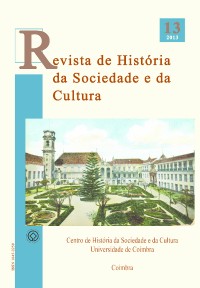Please use this identifier to cite or link to this item:
https://hdl.handle.net/10316.2/39398| Title: | Linha de Cascais: muito mais do que uma via-férrea turística, um estímulo à concentração populacional na faixa costeira por ela servida (1911-1944) | Authors: | Paulino, Joana Catarina Vieira | Keywords: | Contemporary History;Urban History;Cascais Railway;Suburbanization;Tourism;História Contemporânea;História Urbana;Linha de Cascais;Suburbanização;Turismo | Issue Date: | 2013 | Publisher: | Centro de História da Sociedade e da Cultura | Abstract: | A linha de Cascais, construída no final do século XIX e tendo, inicialmente, um fito
turístico, de veraneio e prática de banhos, acabou por se revelar uma via-férrea que promoveu
a concentração de população de facto no espaço suburbano e rural por ela servido, nomeadamente,
entre Algés e Cascais. Cabe, neste estudo, verificar: qual o alcance da influência do
caminho-de-ferro; quais as povoações que, em termos demográficos, se destacavam e se
estas já tinham alguma importância anterior, em termos de quantitativos populacionais e
sectores de actividade a elas associados; e, para finalizar, qual o carácter de ocupação da faixa
costeira pela população, nomeadamente, se é contínuo ou descontínuo. Visa-se, assim, à luz
da presença do caminho-de-ferro (e, nos anos 20 do século XX, mediante a sua electrificação,
que constituiu um estímulo e um factor atractivo), estudar o processo de suburbanização da
cidade de Lisboa para Oeste, junto à zona ribeirinha, o qual, alguns anos mais tarde, originou
a formação de parte integrante da Área Metropolitana de Lisboa. Cascais railway, built in the end of the 19th century and initially having a touristic and sea bathing propose, turned out to be a railway that promoted population’s concentration in the suburban and rural areas where it passed by, mainly, between Algés and Cascais. In this study we want to verify: the influence’s scope of the railway; which were, in a demographic analysis, the most important settlements and if they already had an earlier importance related to demographic quantitatives and to the presence of a certain activity; and, to finish, what was the character of coast’s occupation by the population, namely, if it was continuous or not. It is intended, therefore, through the presence of the railway (and, in the twenties of 20th century, considering its electrification, which made it a lot more attractive), to study Lisbon’s suburbanization process to the West, by the coast, a space that, a few years later, integrated Lisbon’s Metropolitan Area. |
URI: | https://hdl.handle.net/10316.2/39398 | ISSN: | 1645-2259 2183-8615 (digital) |
DOI: | 10.14195/1645-2259_13_16 | Rights: | open access |
| Appears in Collections: | Revista de História da Sociedade e da Cultura |
Files in This Item:
| File | Description | Size | Format | |
|---|---|---|---|---|
| linha_de_cascais_muito_mais_do_que_uma_via-ferrea.pdf | 2.92 MB | Adobe PDF |  |
Items in DSpace are protected by copyright, with all rights reserved, unless otherwise indicated.
